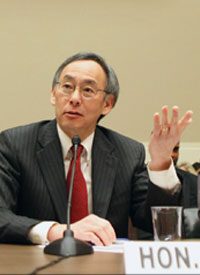
The New York Times reported that Secretary of Energy Steven Chu and Environmental Protection Agency administrator Lisa P. Jackson told the committee that they believed the measure could help accomplish President Barack Obama’s stated goals of moderating climate change, spurring clean-energy technology, and reducing dependence on foreign oil. The 648-page draft (which does not carry a bill number) was released on March 31 by Representatives Henry A. Waxman (D-Calif.) and Edward J. Markey (D-Mass.).
Both Chu and Jackson said they had not read the draft in its entirety and were still studying it. They also noted that the Obama administration had not yet signed off on the draft, but was still working with Congress to fashion a finished product. The proposed act does contain one feature that Obama has pushed — a cap-and-trade plan, under which the government would set gradually tightening limits on emissions, issue rights (or allowances) to emit CO2 corresponding to those limits, and then allow firms to trade the allowances.
The cap-and-trade language is found on page 423 of the draft, under Section 742, "Ownership and Transfer of Offset Credits." Though the administration calls them "offset credits," as in tax credits, before there can be a credit, there must first be a tax, in this case a carbon tax, a factor usually conveniently overlooked by the plan’s advocates.
However, the draft does not address the specifics of how cap-and-trade would be implemented. President Obama has supported a 100-percent auction of these permits, in effect mandating that no one is exempted from paying for emissions. This is likely one provision that the administration wants to have worked into the draft.
Meanwhile, another bill already introduced in the House and presently in the Energy and Commerce Committee already calls for a cap-and-trade plan. H.R. 1759, the Emission Migration Prevention with Long-term Output Yields Act, was introduced on March 26 by Representatives Jay Inslee (D-Wash.) and Michael Doyle (D-Pa.). H.R. 1759 states that its purpose is "to distribute emission allowances under a domestic cap-and-trade program." The bill defines the term "cap-and-trade program" as "an economy-wide program enacted by Congress that distributes or auctions emission allowances for the control of greenhouse gas emissions under the Clean Air Act."
For some reason, however, H.R. 1759 has not received nearly the attention as the draft released by Representatives Waxman and Markey.
Representative Fred Upton (R-Mich.) has called the latter draft legislation a "cap and tax" proposal that would "kick working families when they’re down." U.S. Representative Marsha Blackburn (R-Tenn.) has also called Obama’s "cap and trade" plan "cap and tax," and has said it would cost each household $1,300 in new energy taxes.
The EPA’s Jackson disagreed that the Waxman-Markey proposal would pose economics hardships and said the measure would impose only "modest costs compared to the benefits."
But those who have studied so-called climate-change legislation often come to conclusions closer to those expressed by representatives Upton and Blackburn. When Senators Joseph Lieberman (I-Conn.) and John Warner (R-Va.) introduced the America’s Climate Security Act of 2007 (S. 2191) in the last Congress, the Heritage Foundation warned, "All such climate change measures warrant careful scrutiny, as they would likely increase energy costs and do considerably more economic harm than environmental good."
And, if we listen carefully, we find that even members of the Obama administration have admitted that cap-and-trade plans will impact the economy: the government has already made plans to "help" (at taxpayer expense) those who might suffer because of them.
Joseph Aldy, a special assistant to the president for energy and the environment, announced on April 8 that a portion of the revenue received from any cap-and-trade plan must go toward relieving those who end up paying higher energy bills because of the plan — an admission against interest that energy costs are going to go up, just as critics claim.
"There will be those who are going to be vulnerable as we make this transition and … we need to actually target the allowance value and revenues to those households, communities, and businesses," said Aldy at an Energy Information Administration forum.
Often lost in discussion about which energy plan is best to prevent "global warming" is that such warming — if it exists at all — may be a natural phenomenon that threatens neither the Earth nor the creatures (including humans) that inhabit it.
As award-winning NASA astronaut/geologist and moonwalker Jack Schmitt, who flew on the Apollo 17 mission and was formerly a member of the Norwegian Geological Survey and the U.S. Geological Survey, has stated: "The ‘global warming scare’ is being used as a political tool to increase government control over American lives, incomes and decision making. "
*Note: A PDF copy of the "Discussion Draft" of the Waxman-Markey energy legislation can be obtained by going to this House Committee on Energy and Commerce Web page, then going to the bottom of the page under "Documents" and clicking on "American Clean Energy and Security Act of 2009 Discussion Draft Full Text."
— Photo: AP Images



